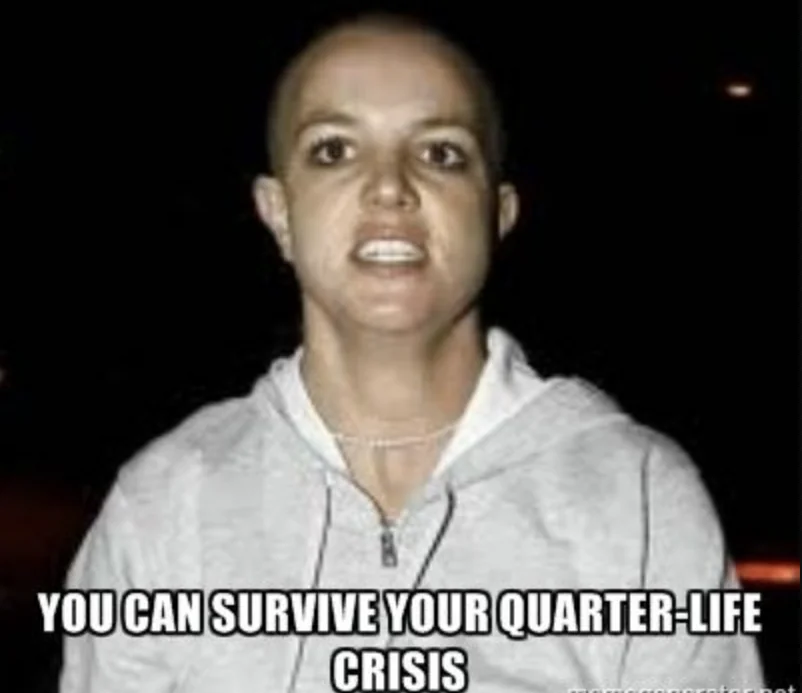"In a culture that knows everything the people would know nothing" — Neil Postman, 1984
Here's a question that keeps me up at night: are we actually getting dumber, or does it just feel that way? Spoiler alert—it's complicated. But what's not complicated is this: the way we communicate has fundamentally changed our brains, and not always for the better. Let's explore how humanity went from campfire conversations to infinite scrolling, and what that means for our collective intelligence.

How Our Communication Has Evolved
Imagine a world where your grandma's political views weren't a couple of clicks away. I know it's hard, but for millions of years this was a reality for us humans. With no phones, email, or USPS, one would have to undertake the arduous task of communicating through oral or written means with the speed of two legs (or one, or horse, or Flintstones footmobile). There was a natural limit to the distance that information could travel.
Then one fateful night it happened, the brainchild of Samuel Morse, the telegraph, was born—a breakthrough that excelled the speed and distance with which information flowed by one thousand fold.
Not much later, the radio took things a step further, adding voice and longer-form media, and soon television painted a picture for captured audiences. Seemingly overnight, everyone's informational world exploded to a global scale.
It grew once again with the creation of cell phones, enabling us to connect with anyone, anywhere, at any time, with only a few taps and swipes. Gone were the days of needing to leave your home to speak with someone, and gone were the days of only knowing local events; rather, here were the days of unlimited and unbound connectivity.
All these epic epistemological shifts have occurred within the span of little more than a century. With every advancement our world has grown larger and more informative, now connecting us with distant relatives, friends across the world deployed in Africa, or that one kid from highschool you hoped to never see again. There are countless upsides to this increased connectivity that has driven human cooperation and innovation, (which ASU is #1 in). I would, however, like to pivot and focus on how these abrupt shifts in our means of communicating have perhaps harmed our ability to process information on a personal level. Don't freak out, I have a solution.

(early human communication methods circa 2000 B.C)
For the preceding discourse to fully ripen your noggin noodle we must first talk about the different ways we as humans communicate everyday.
The Methods
With each way we can identify a "sender" and a "receiver". When we take on the role of "receivers" of information, it is important to understand that we can be influenced or changed by the communication method of the "sender". To elaborate on this point I would like to categorize our communicative methods into four separate narratives:
- Same Place, Same Time. This means of communicating is what it sounds like, both the sender and receiver of information must be in the same place divulging and processing the information in real time. This is merely a fancy way of saying you are talking face-to-face with another human.
- Same Place, Different Time. An example of this would be a billboard, or an advertisement in a store window. The company is effectively communicating a message to you through means of your proximity and is not bound by any form of time constraint.
- Different Place, Same Time. Phone calls, facetime, video conferences are all forms in which the sender and receiver can synchronously communicate, despite being miles apart.
- Different Time, Different Place. This is one that has exploded in recent years due to technological advancements that allow a sender and receiver to divulge and process information on their own time and in their own place (e.g. email, voicemail, or texts).
Think you can remember all that? Ok good let's continue.

(you rn)
Each method of communication requires a different level of attentiveness from both the sender and the receiver. Every method serves a distinct purpose in our everyday lives and there are upsides and downsides to each. None of the four categories of communication are inherently bad or destructive, however, it is worth considering the psychology as to why favoring one method over another could lead to cognitive conflict on a personal and even societal level.
Big boy trousers on it's time to get interesting.
Let's jump in our time machine and zoom back to a time where our only means of communication is Same Place, Same Time.
Long before the invention of pictographic, ideographic or phonographic writing (big words I know) there were vocal chords. This type of communication is just as much founded by the words spoken as the reactions to what is being said.
Body language requires more of the receiver's cognitive resources to focus on how the sender is postured, their facial expressions, gestures, emotional responses, and credibility. Thousands of inferences are made in every face to face conversation, whether consciously or subconsciously, depending on how the information is received or sent. This demands some level of effort from both parties, and how our mind is poised to imbibe information this way differs from how our mind prepares to ingest written words, emails, advertisements, phone calls, etc.
In a study done in 2005 researchers analyzed models for cognition in relation to the form of the communication medium, and noted that, "as the level of social presence increases, the effort and attention devoted to the communication process also increases" (Robert 14).

(time machine)
Why would attentiveness or motivation in communication matter? Can we not be motivated to respond to our emails, texts, or facetimes? Why does single-ply toilet paper exist? I hear you, dear reader. Allow me to shed some light on all but the last question (for I also do not know).
We can think of attention as what "receivers" pay to consume information and convert it into knowledge. The sender must have the receiver's attention before any part of the communication process can begin. You cannot convince someone of your point if they are not paying attention.
Communication, therefore, is not only an exchange of information but also an exchange of attention….I'll let that one sink in
One's Motivation joins the party simply to increase said attention. As noted previously, the effort one must take to meet and communicate with someone face to face is much more an investment of time and effort than other methods. This is perhaps why a decline in such communication has been so drastic.
Ok now stay with me here, all things being equal, it is reasonable for us to argue that since the receiver is willing to pay a higher "cost" via time and effort utilized to meet, the receiver must be motivated. Moreover, "individuals who are motivated and have the ability to process information, will engage in issue-relevant thinking" (Robert 14).
To engage in face to face communication demands attentiveness, motivation, and ultimately leads to some degree of information processing that otherwise is not required from other forms of communication.

This all seems hunky-dory, however, the drawback we find in face-to-face communication is the time constraint that limits our ability to process information. While our attention and motivation steer us towards elaborating on ideas during conversation, the small window of time we have between the sender talking and our response is relatively small.
If a complex argument is brought up in speech, no matter how focused or motivated you are, without adequate time your brain will simply not be able to parse out or reflect on all the knowledge and information provided.
Wow, face-to-face communication is amazing right? But before you throw your phone away and move to a technologically-destitute commune, let's quickly touch on the other three methods of communicating. You remember them all right?
- Same Time, Same Place. (Face-to-face)
- Same Time, Different Place. (Facetime, calls)
- Different Time, Same Place (Billboards)
- Different Time, Different Place (Email, texting)
I had to remind myself as well.
Where face-to face communication falls short, different time, different place, picks up the slack. A common example of this being a book. The author of a book spends time communicating thoughts, ideas and stories to their audience through words on a page.
We are now not constrained by any form of time, aside from that which is required to process the written text. If a reader so chooses they can read, reread, and spend hours, days, or as long as their little heart desires on one paragraph in a book or article. Now the cognitive cost of reading can vary depending on the ideas expressed in the pages, but inherently the lack of a time constraint places less pressure on an individual.
This in turn lowers the attentiveness and motivation inherently demanded of the reader. If you so choose, you can approach a book with all the focus and vigor ready to exert every last little brain cell to understand the author's word salsa. However, it now has become a choice.
The abundance of time allows for the transmission of much more complex messaging. Allowing time for the receiver to assess, digest, and form opinions on a subject permits their brain to fully comprehend and grasp concepts which would otherwise be nearly impossible in a time-constrained medium ie. face to face, or phone call/facetime.

All this seems pretty intuitive, nothing crazy has happened…yet.
The Issue
The medium in which certain information is spread affects one's attentiveness, motivation, and ability to process. So what is the issue here? "As the ability to ensure that motivation and attention is present goes up, the ability to process goes down, and vice-versa. Senders are therefore left with a dilemma and must balance attention and motivation with the ability to process" (Robert 16).
For example, someone uses Twitter to convey a complex message, yet focuses on catchy wording, few characters, and exhibits the cognitive depth of a belly button. Consumers of this message will have their attention piqued and approach the tweet utilizing an equivalent depth of cognition. The time was unconstrained, providing the receiver ample time to digest the argument, yet the tweet, in hopes of gaining attention, focused more on drawing in people's eyes to the utmost degree which in turn leads to a lessened ability or willingness to dissect the argument.
Nowadays, with social media, television, and news articles, entities disseminating information care little for how the recipient approaches or digests the messaging. As long as they got you to tune in, click the headline, or tap the advertisement, they got what they wanted.
The emphasis placed on garnering eyeballs and clicks has turned most everyday information we encounter into nothing more than an emotionally manipulative hellscape of clickbait. We, as humans, approach this for what it is, gathering little backstory, disregarding the large picture, and moving onto the next thing.

Reversal
I would like to emphasize that this is in no way the rule. It is, however, the trend. There is nobody standing over you dictating whether or not you fully uncover the truth in that New York Times article. Time permitting, you can do endless research, reflect on your own experiences, and come to a concise and measured conclusion. By that time, I would argue, the post is now long forgotten by most and something new has grasped the general audience's attention.
The deluge of bullshit (excuse my French) modern media pumps into our brains is incessant and increasingly less relevant to our daily wellbeing.
The telegraph enabled information to travel long distances informing one of people's doings miles away. The radio gave way to longer form discussions of such things, and the television painted its picture.
Prior to these leaps in communication methods, a person's ingestion of information and news, "had action-value. In the information world created by telegraphy, this sense of potency was lost, precisely because the whole world became the context for news. Everything became everyone's business. For the first time, we were sent information which answered no question we had asked, and which, in any case, did not permit the right of reply" (Postman 131).
Thus, we have here a great loop of impotence: most information we consume does no more than elicit from you a variety of opinions and emotions, about which you can do nothing except send to others, about which they can also do nothing.
In Conclusion
Now, dear reader, if you have made it this far, thank you. While seemingly bleak and unchanging, the landscape that is modern media is not unsurmountable. If you already threw your phone away and joined a commune, more power to you, let me know how it is. For those still with us, I would like to offer some alternative solutions to combating the endless cycle of irrelevant and irrational flood of information we encounter everyday.
The first is already done for you. As author Nicholas Johnson once put it, "no medium is excessively dangerous if its users understand what its dangers are". The time you took to read this email, understand its contents, perhaps relate something to your own experience, and follow me through these paragraphs, hopefully educated you in some way as to the effects information mediums can have. Moreover, it allowed a break from ingesting sensationalized articles or advertisements, giving your mind the ability to elaborate and rationalize on a deeper level than most media requires.
Understanding information as it comes in, and categorizing it appropriately, can make all the difference. Noticing the torrent of attention-grabs for what they are and understanding that maybe scrolling TikTok for financial advice is not the best way to learn how to manage your money, will serve to aid in your search for what is true in the world.
Take some time everyday to pause and read something written that does not aim to use your eyes as a means of making money, but rather to inform. Have meaningful conversations with people you love, or strangers. Recognizing information for what it is will help us balance our consumption.
